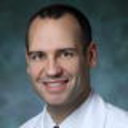"Fulfilling the chief of his duties as a physician": Harvey Cushing, selective dorsal rhizotomy and elective spine surgery for quality of life.
Paraules clau
Resum
At the beginning of the 20th century, the development of safer anesthesia, antiseptic techniques, and meticulous surgical dissection led to a substantial decrease in operative risk. In turn, the scope of surgery expanded to include elective procedures performed with the intention of improving the quality of life of patients. Between 1908 and 1912, Harvey Cushing performed 3 dorsal rhizotomies to improve the quality of life of 3 patients with debilitating neuralgia: a 54-year-old man with "lightning" radicular pain from tabes dorsalis, a 12-year-old boy cutaneous hyperesthesia and spasticity in his hemiplegic arm, and a 61-year-old man with postamputation neuropathic pain. Symptomatic improvement was seen postoperatively in the first 2 cases, although the third patient continued to have severe pain. Cushing also removed a prominent spinous process from each of 2 patients with debilitating headaches; both patients, however, experienced only minimal postoperative improvement. These cases, which have not been previously published, highlight Cushing's views on the role of surgery and illustrate the broader movement that occurred in surgery at the time, whereby elective procedures for quality of life became performed and accepted.


